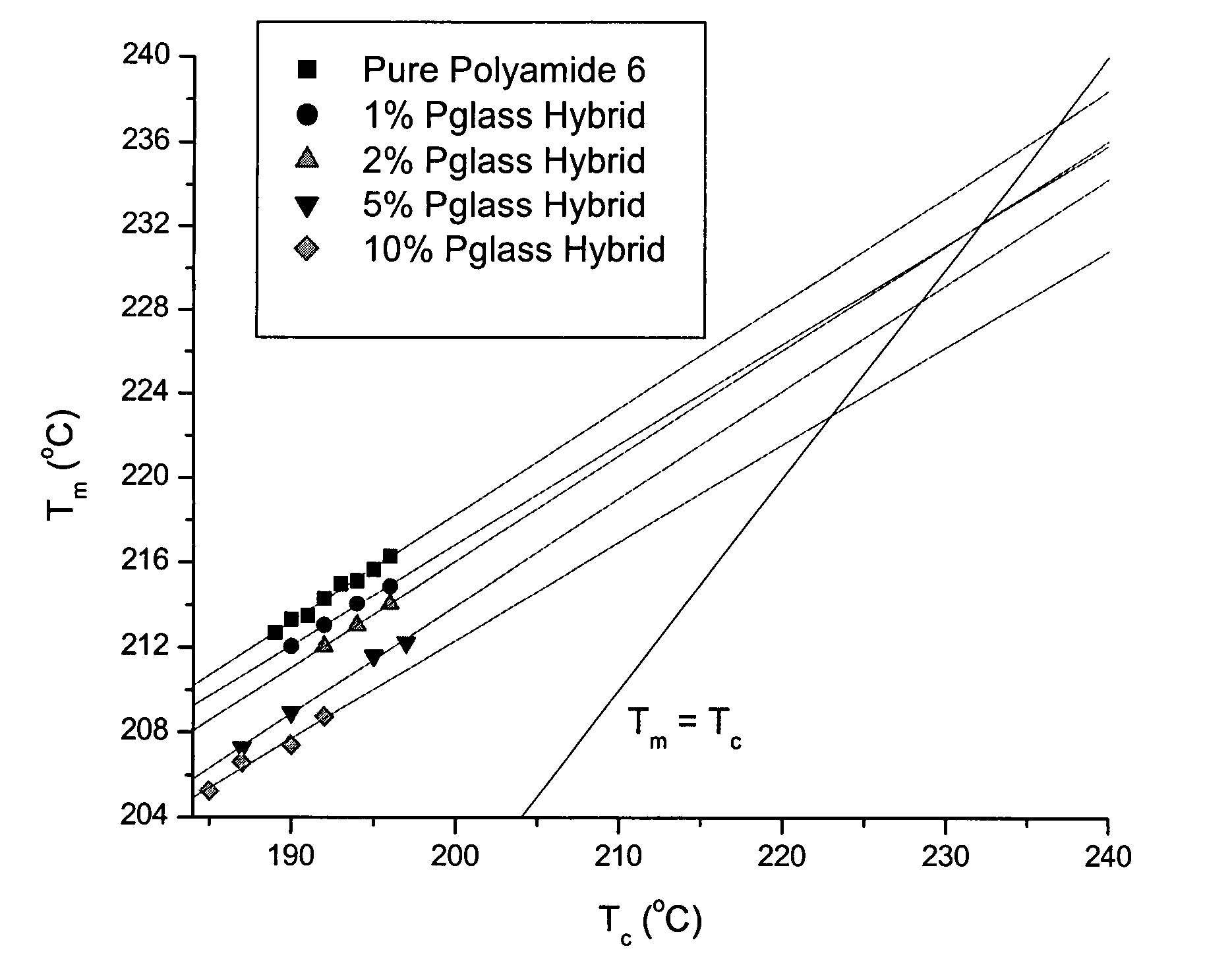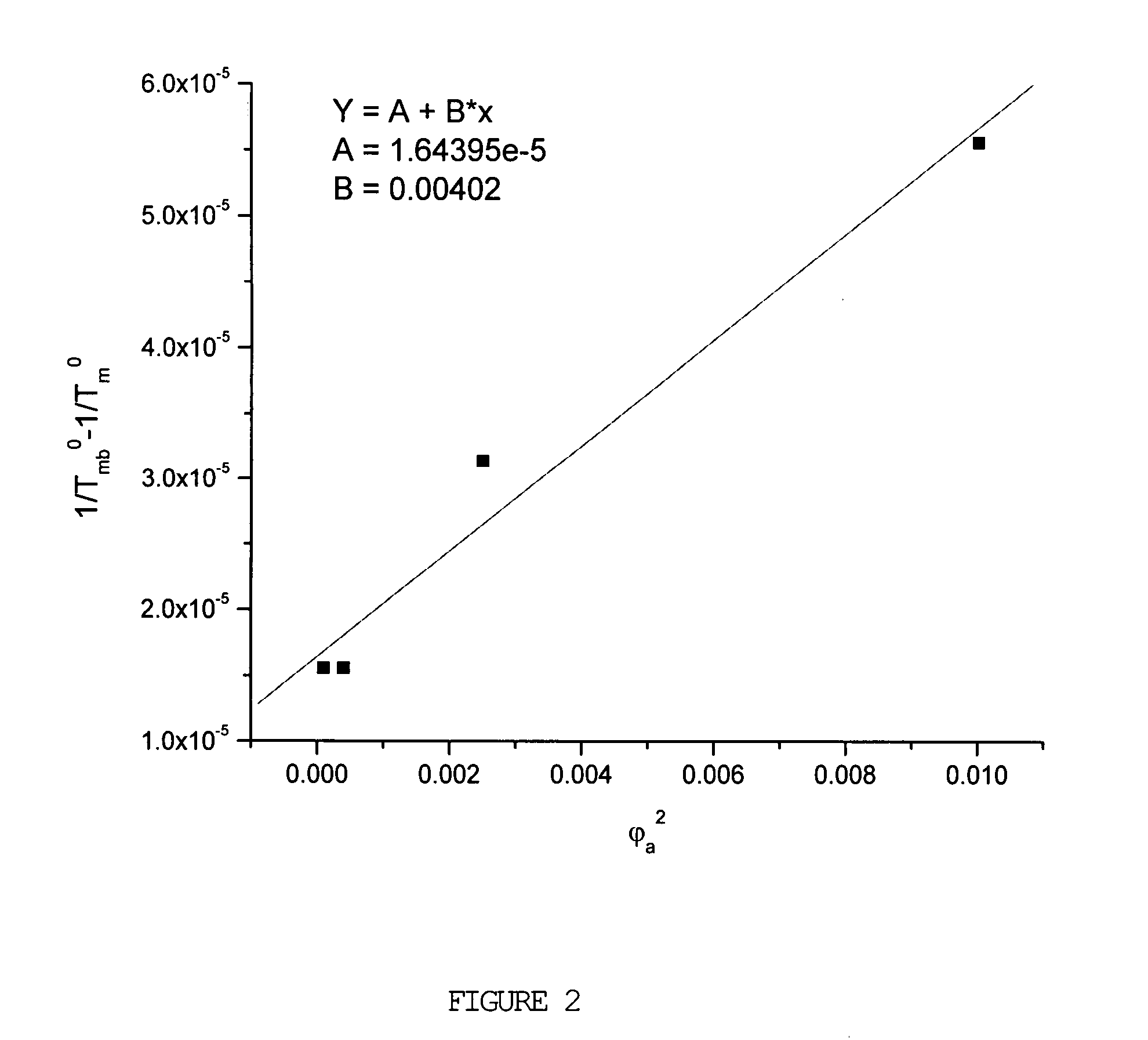Polyphosphate glasses as a plasticizer for nylon
a technology of polyphosphate glasses and nylon, which is applied in the direction of layered products, etc., can solve the problems of inability to process through extrusion and injection molding, and achieve the effect of relatively similar hybrid morphology
- Summary
- Abstract
- Description
- Claims
- Application Information
AI Technical Summary
Benefits of technology
Problems solved by technology
Method used
Image
Examples
example 1
Phosphate Glass / Polyamide 6 Hybrid Materials
[0021] Tin Fluorophosphate glass displays good water resistance and chemical durability, is non-toxic and results from a simple synthesis. The low Tg Pglass used in this example has a molar composition of 50% SnF2+20% SnO+30% P2O5. This results in a glass with a density of 3.75 g / cc and a Tg of 125.7° C. The glass was synthesized in our laboratory using procedures reported by B. S. Adalja, J. U. Otaigbe and J. Thalacker, Polymer Engineering and Science, 41, 1055-1067 (2001), herein incorporated by reference in its entirety (7). The tin fluoride and tin oxide were supplied by Cerac Inc. and the ammonium phosphate was supplied by Sigma-Aldrich. The polyamide 6 used was Capron 8270 HS supplied by Allied Signal.
[0022] The hybrids were prepared using a Thermo-Haake Polydrive® Melt Mixer equipped with roller rotors. Nylon polymer composites containing 1%, 2%, 5%, and 10% Pglass by volume were made for testing. Preparation of the hybrid involve...
example 2
Study of the Effects of Melt Blending Speed on the Structure and Properties of Phosphate Glass / Polyamide 12 Hybrid Materials
[0035] The effects of processing conditions on the rheology, crystallization kinetics, and tensile properties were investigated for the first time for phosphate glass / polyamide 12 hybrid systems, or nylon polymer composite, to understand their complex processing / structure / property relations. FIG. 6 depicts typical stress / strain curves for the hybrid materials with 10% Pglass volume percent. FIG. 7 depicts typical stress / strain curves for polyamide 12 with 20-50 volume percent P glass.
[0036] Increasing amounts of phosphate glass (Pglass) caused an increase in hybrid viscosity. Hybrid viscosity was also affected by processing (melt-mixing) speed and small amplitude oscillatory shear tests and scanning electron microscopy were used to qualitatively examine the hybrid morphology. The addition of Pglass caused a decrease in hybrid crystallinity that was unaffected...
PUM
| Property | Measurement | Unit |
|---|---|---|
| size | aaaaa | aaaaa |
| Tg | aaaaa | aaaaa |
| density | aaaaa | aaaaa |
Abstract
Description
Claims
Application Information
 Login to View More
Login to View More - R&D
- Intellectual Property
- Life Sciences
- Materials
- Tech Scout
- Unparalleled Data Quality
- Higher Quality Content
- 60% Fewer Hallucinations
Browse by: Latest US Patents, China's latest patents, Technical Efficacy Thesaurus, Application Domain, Technology Topic, Popular Technical Reports.
© 2025 PatSnap. All rights reserved.Legal|Privacy policy|Modern Slavery Act Transparency Statement|Sitemap|About US| Contact US: help@patsnap.com



